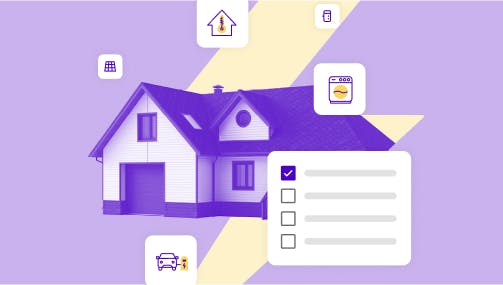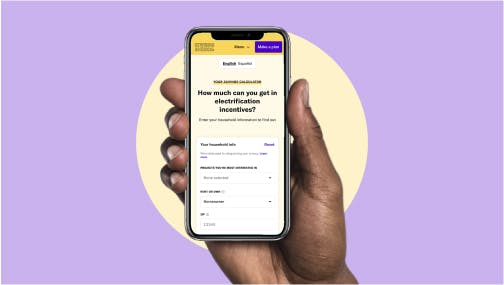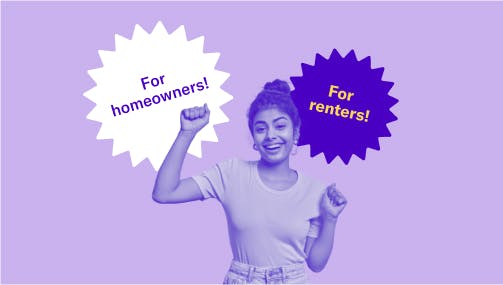Home Efficiency Rebates (HER)
Efficiency Rebates
The Home Efficiency Rebates (HER) are designed to reward energy efficiency retrofits that are modeled to achieve or have achieved verifiable minimum energy use reductions. A retrofit is an upgrade that makes your home more energy efficient. Eligible retrofits will probably include weatherization, space heating and cooling, and water heating, among other measures.
Jump to section
Introduction
Introduction
Disclaimer: All values listed below are estimates. The rebates will be implemented differently in each state, so we cannot guarantee final amounts, eligibility, or timeline. Without additional appropriations from Congress, the rebate programs will end once their initial IRA funding is exhausted.
Upfront Discount
Up to $8,000, varies by state
Now available
For the latest information on rebate availability in your community, please consult your state energy office’s website.
These programs are tailored to the unique needs of each state and vary significantly in who is eligible, what projects are covered, what building types are supported, and how people claim rebates.
As of July 14, 2025, efficiency rebates were available in Georgia, Indiana, Michigan, North Carolina, Washington D.C., and Wisconsin. Some states have paused or delayed their programs due to recent uncertainty regarding federal funding. We are continuing to monitor the situation.
For the latest information, see Atlas Buildings Hub's Home Energy Rebate Tracker.
The Department of Energy (DOE) has approved efficiency rebate programs in many more states.
Before your state’s program launches, you can:
Get an energy audit to understand how much you can save
Apply for tax credits for efficiency upgrades
If you have a lower income, you can apply for your state’s Weatherization Assistance Program to get assistance paying to improve the efficiency of your home
Check if your state or utility has any existing programs to help residents pay for efficiency upgrades. We will be adding more of these programs to our calculator on an ongoing basis.
Sign up to receive rebate updates
If you'd like to be notified when the rebate program in your state launches, just subscribe to our email list.
Continue reading to learn what we know so far about income eligibility, home upgrades, and how much you might save.
Who qualifies for efficiency rebates?
The efficiency rebates are for single-family and multifamily buildings and both homeowners and landlords, who can claim credit for efficiency improvements.
As designed in the legislation, the efficiency rebates are quite broad and can cover a range of homes.
Both multifamily and single-family homes are eligible
Owners and units with residents of all income levels can qualify, although higher rebate amounts are provided for low-income homes (<80% of area median income)
Only retrofits of existing homes or units are eligible
However, the details and timing of how the efficiency rebates roll out are highly dependent on how states design their programs. A state could choose to allocate all of their funding to multifamily or to low-income single-family homes.
What electrification upgrades qualify?
Any upgrade that results in energy savings can qualify for the efficiency rebates.
Because the efficiency rebates are dependent on modeled or actual energy savings, just about any energy efficiency improvement to a home might qualify, although since significant (>15%) energy savings are required in order to claim the rebates, most projects will likely focus on weatherization and building envelope improvements and improving the efficiency of large systems in the home like space heating and cooling and water heating.
The efficiency rebates can be claimed along with tax credits for the same project, although you should consult with your personal tax advisor for details. The efficiency rebates cannot be combined with the electrification rebates (or any other federal grant or rebate) for the same upgrade (e.g. a heat pump), but the two programs can be combined for different upgrades within the same home (e.g. heat pump and weatherization).
How to use the efficiency rebates
Because the efficiency rebates are performance based, they will require a home energy audit and energy modeling to be done for the home.
Measured savings and modeled savings programs involve specific criteria that must be met. We recommend working with a knowledgeable, participating contractor if you are seeking to claim an efficiency rebate.
For states that allow a modeled energy savings approach, the energy modeling software used must be consistent with the BPI-2400 standard to estimate energy savings before the upgrades and provide rebates for homes predicted to achieve a minimum of 20% energy savings.
For states that allow a measured energy savings approach, the method used to measure home energy savings post-installation must be approved by the Department of Energy. The method for collecting and verifying energy use for the measured savings track is still being determined. This will probably involve comparing utility bills before and after the upgrades.
For all homes, an energy audit will be required to produce an accurate baseline of energy use for the home.
The efficiency rebates should generally be implemented as upfront discounts applied on the contractor invoice for the efficiency upgrades. The contractor (or a third-party “aggregator”) should be reimbursed by the state after modeled or measured energy savings are verified. An aggregator is a company or nonprofit organization that assumes the administrative responsibility for processing the efficiency rebate — so contractors can focus on the installation.
All the details of how reimbursement will work — and who will be approved to complete eligible projects — will be determined by officials in your state.
Discover other incentives with the savings calculator!
There are other incentives that you may qualify for. Our incentive calculator will show you a personalized list of incentives.
Go to Savings CalculatorHelpful tools

Personal Electrification Planner
Interested in upgrading your home to all-electric appliances and vehicles? Generate a personalized electrification plan based on your particular home, lifestyle, and priorities — all in just a few minutes.

Savings Calculator
Find out how much you could save with tax credits and rebates for heat pumps, water heaters, electric vehicles, electric stoves, rooftop solar, wiring upgrades, and energy efficiency improvements to your home.

Rewiring America Homes Site
Explore resources to help you electrify everything! Learn about induction stoves, heat pumps, solar panels, EVs, and more.
Want to learn more about electrifying everything?
Join millions of households who are going electric. sign up for free electrification tips, explainers, advice, and more.